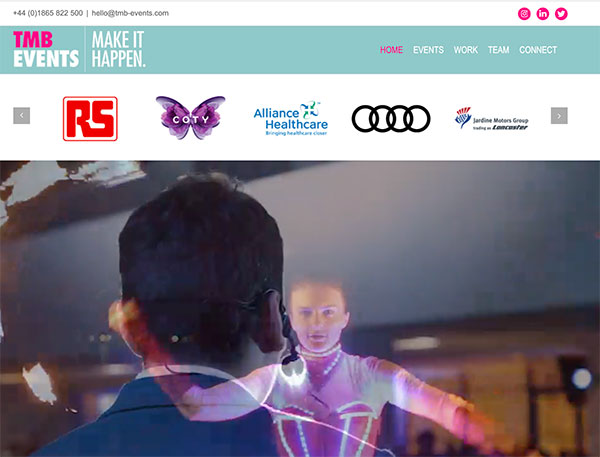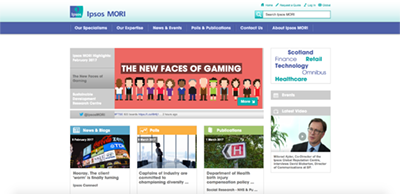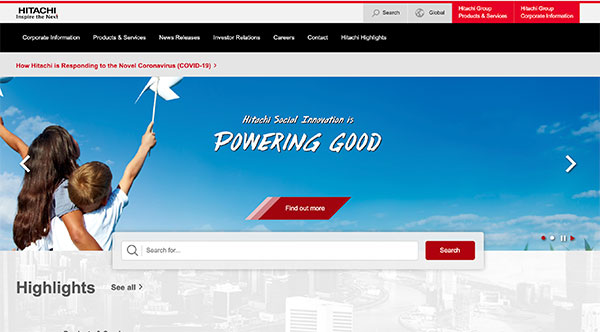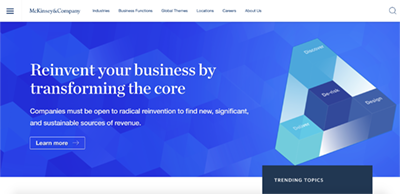It was 22 years ago that a US college student taking a leave of absence from his studies founded what is now widely regarded as the world’s first blog. With article titles like “high stylin’ on the Wurld Wyde Webb”, its author, Justin Hall, went on to become a minor celebrity with his zany and often personally revealing posts. Justin was writing at a time before the word ‘blog’ had even been coined, but with his website’s focus on linking internally and externally, tags and sharing, it was a blog in all but its name.
In the years since, any company worth its salt has started a blog page containing articles about their latest news, company updates, latest product releases, new hires, etc. The blog page helped companies advertise themselves, boost their search engine rankings and create an editorial theme to define who they were. A simple medium to connect and share timely and relevant information with potential customers; blogs were everywhere.
But in 2017, the blog died.
Fifty Five and Five’s latest research has reviewed how industry leaders are now presenting their content, and shown irrefutably that the traditional method of blogging is on its way out.
“The blog page is dead” he proclaimed… in a blog post
If it seems like we’ve written ourselves into a corner, so let’s elaborate. We believe that blogging per se is doing just fine. However, the blog page—as in, the place you navigate to from a website’s navigation bar—is kaput. It’s dead and gone. Worm food. It’s pushing up daisies.

The blog page (rather than a blogpage) is a curious place where a very specific kind of content is uploaded. At small and medium sized companies, it’s normally the job of a marketer or someone in comms to prod their colleagues to write something: a 400-word article about anything to make it seem like the firm is still alive every couple of months. Any marketer who’s done a half-day course on SEO knows they need to keep uploading fresh content to their website to maintain some sort of ranking. And so they write articles and post them to the blog page.
But here’s the news: the blog page is dead. No major or forward-thinking company in 2017 just uses this blog page to promote their content, to tell their stories or get inbound links. The blog page is dead for them. And other companies need to start realising that a whole new type of content creation and marketing has subsumed the blog.
If not the blog page, then what?
If the blog page is dead, what exactly are companies doing to express their views, share their news and enthuse about their latest releases? At Fifty Five and Five, we’ve carried out a study of the most successful companies and their websites and compared the way these businesses present their online content with smaller firms.
As content marketers, we spend our days exploring the websites of companies of all sizes and in the last couple of years have noticed some consistent differences in the way the most successful companies market and promote material on their websites in comparison with smaller firms.
Our findings concluded: many ‘forward thinking companies’ (often those with 1,000 or more employees) do not have a ‘blog’ tucked away somewhere in the corner of their website anymore. Instead, organisations like PWC, Oxfam, BMW (to name just a few) have taken a media organisation approach to presenting themselves, modelling themselves on the methods of news providers like the BBC. They no longer have dedicated pages for specific kinds of content. Instead, they use their company home page as a central hub for any and all content they produce—blog-style articles included.
Does size matter?
We wanted to see if there was a link between bigger companies and this more forward-thinking approach. To do this research, we used LinkedIn to list companies by size and selected 20 European, North American or Australasian firms at random that were listed as employing 10,000 people or more. We then did the same for firms listed as having less than 50 employees. Once we’d collected our list of companies, we took screenshots of their website homepages and compared the kinds of content we found on the home pages and in the navigation bar.
The result? As expected, the big firms had, by and large, abandoned the traditional blog format. 75% of the big companies we reviewed were instead using their company home page as a regularly updated, multimedia news source. Most of these companies used their homepage as a place for presenting all their latest news, research, videos, promotional material and more. By contrast, only 10% of the small businesses could be described as having a ‘multimedia’ style home page. The 90% used this page as an ‘about us’ or a place to list their services. This was very different to the big brands who focused instead on telling stories.
The following demonstrates the way the homepages of some websites in our two groups compare:
BIGGER FIRMS
Chubb – www.chubb.com

- Policy report
- Magazine
- Duty of care report
- It does not have a separate blog
Idea Couture – ideacouture.com
- Links to thought leadership articles
- Links to the company’s magazine
- Links to the CEO’s blog
- Separate blogs accessed via the home page
Generali – www.generali.com
- Articles on the company and thought leadership
- Latest company financial data
- Latest research findings
- Instagram links
- News
- Has no separate blog
SMALLER FIRMS
Think Productive – thinkproductive.co.uk
- Homepage has a distinct ‘About us’ summary
- Lots of information about specific services
- Has a separate blog
Verifile – www.verifile.co.uk
- A summary of the firm’s services
- Links to register for more information
- Includes a separate news/blog page
–
–
TMB Events – tmb-events.com
- A paragraph of ‘about us’ messaging
- A separate news and updates blog
Clearly, this random selection of companies are hardly comparable in terms of what they do. However, just focusing on how content is presented on the home page, we notice a stark difference. Big firms are undeniably phasing out the traditional blog sub-page from their websites and instead are opting for a homepage which feels more like the front page of a multimedia news website. A single page of more versatile, curated content.
If we take a couple more examples of major ‘thought leaders’ here and compare their homepages to those of leading media organisations, the direction is even clearer:
INNOVATIVE FIRMS
Ipos MORI – www.ipsos-mori.com
They go for Images accompanying various articles with ‘read more’ links.
Microsoft – microsoft.com
Microsoft.com is an image heavy website with various headlines attached to articles in a grid.
Hitachi – www.hitachi.com
Again a very image heavy homepage, boxes on a grid with links to news stories.
McKinsey – www.mckinsey.com
Greater use of whitespace, use of listed news, as well as large images accompanying news.
MEDIA OUTLETS
The Guardian – www.theguardian.com
The Guardian goes for a grid style layout, images accompanying read-more links.
The BBC – bbc.com
The BBC use varied shape lead images based on a grid, with headlines.
The Independent – www.independent.co.uk
Image and video-heavy, uses different sized boxes on a grid.
CNN – cnn.com
Lists of news story links, plus varied size boxes, heavy use of images with links to news on a grid.
What is striking in this comparison is how similar the homepages of the large firms are to those of major media organisations. Not only do they use their homepage as a constantly updated content feed, they also lay out their content in a very similar manner, using grids with lots of images of varying sizes.
What can you take away from this brief comparison?
The immediate conclusion to draw from this comparison is that, for large companies at least, the notion of using the website homepage as a kind of ‘about us’ with a list of services is dead (along with the blog page). Very few produce blogs (and other content) in the way smaller companies continue to do so. While they still write blog posts, eBooks, reports and other typical marketing content, large firms are not hiding this content away somewhere in the navigation menu. Instead, we see these companies using their homepage as a content hub, where a lot interesting and relevant material is placed front and centre.
So how can you use these findings to improve your content strategy and engage visitors more effectively?
For smaller firms who see content marketing as a key part of their strategy, there are some important lessons to learn from the research
- Don’t hide great content. Blogs should not be placed somewhere in the back end of your website, only accessible via the navigation bar or a link on your homepage. Instead, every new piece of content you upload should be made clearly visible and accessible on your home page.
- As with blogs, the same point goes for any other content you produce. Place all your latest research findings, your new eBooks and whitepapers right at the front of your website.
- Avoid the temptation to use your homepage as an ‘about us’. One big lesson we can learn from reviewing these major companies is that they show rather than tell. By producing great content, the likes of McKinsey show right away that they are thought leaders and experts in their field—they don’t have to define that up front with a bland statement or a description of their products.
- Rejig your design. Of course, the goal isn’t to wantonly copy industry leaders, but there’s undeniably a lot of value in imitating what works. At present, it seems the trend is for varied size boxes on a grid, with video, news stories and integrated newsfeeds all built in neatly together. Take inspiration from both industry leaders and media organisations.
A new vision for the blog
While we’ve only shared a small sample size, our research does strongly support the notion that the blog—at least in its traditional form, tucked away somewhere in your website’s navigation—is dead. Industry leaders are irrefutably moving away from the traditional approach of presenting their content. No longer do they have separate web pages for videos, downloadable resources or blogs. Rather, they are now using their homepages as a kind of central, media-style hub for all their different kinds of content, regardless of format.
This makes sense in many ways. For visitors, it shows them who you are, rather than tells them. Visitors can more easily get a taste of what you do, and browse in a way that they are now used to thanks to the format popularised by major news websites. Finally, killing off the blog and integrating your content into your company website’s homepage simply looks more professional and modern.
“As we move into 2017, we believe the blog page is dead. So go ahead, kill yours today.”
At Fifty Five and Five, we practice what we preach. Our research strongly suggests that in 2017, firms of any size should be reappraising how they present their content on their websites. We believe that bringing all your content right to the front and centre, in a similar way to media organisations, will increasingly become the preferred way of businesses to present themselves, and is already the preferred way for visitors to investigate companies they’re interested in. And this is why we are launching our new multimedia style website, killing off our separate blog and content pages, and bringing all that information direct to you, the reader, where you want it.
Need help with your content marketing?
Get in touch with the Fifty Five and Five team to learn how you can bring your blogs back to life and create an excellent content strategy.














